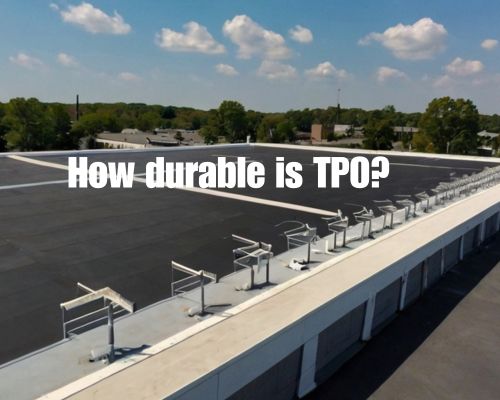What Type of Roof Is Most Reliable?

Expert Insights on Durability and Performance
When considering what type of roof is most reliable, the answer largely depends on your specific needs and local conditions.
The most common types of roofing materials include asphalt shingles, metal, tile, and slate. Each material comes with its own set of advantages and disadvantages that need careful consideration.

For most homeowners, asphalt shingles are often the go-to choice due to their affordability, ease of installation, and decent durability in various climates.
Meanwhile, metal roofs offer exceptional longevity and are highly resistant to severe weather conditions, making them an excellent investment for those in areas prone to extreme weather.
Lastly, tile and slate roofs, although more expensive, provide unmatched durability and a classic aesthetic appeal.
Your local climate plays a pivotal role in determining the most reliable roof type for your home.
While asphalt shingles perform well in moderate climates, metal roofs are ideal for areas with heavy snowfall or high winds.
On the other hand, homes in hot, dry regions might benefit from the heat resistance and low maintenance of tile or slate roofs.
By carefully evaluating these factors, you can choose a roofing material that provides optimal reliability and value for your home. Let us get to analyze things with Charles Jimerson from CJ Commercial Roofing NJ.
Analyzing Roofing Material Options
Choosing the right roofing material involves considering several factors including durability, weather resilience, cost, aesthetic appeal, and environmental impact. Below, we break down these key points to help you make an informed decision.
Longevity and Durability
When it comes to durability, materials like slate and metal roofing stand out.
Slate roofing can last over 100 years, while metal roofs often come with warranties of 50 years or more.
Clay tiles and concrete roofing are also robust, offering lifespans of up to 70 years.
Conversely, asphalt shingles—though affordable—typically last 20-30 years.
Cedar shakes and wood shingles can last 30-40 years but may require more maintenance to prevent decay.
Weather Resilience and Protection
Metal roofs are highly effective against extreme weather conditions, offering excellent impact resistance and waterproofing. Their interlocking panels provide strong wind uplift protection.
Meanwhile, tile roofs, especially those made from clay and concrete, offer good weather resistance and help in areas prone to hurricanes and earthquakes.
Asphalt shingles are decent in most climates but perform poorly under severe stress.
Emerging options like solar roofs and green roofing offer added benefits, such as energy production and natural insulation, but their weather resilience varies by design.
Cost and Investment Value
Asphalt shingles represent the most affordable option, making them a popular choice for many homeowners.
Metal roofing and tile roofs have higher upfront costs but offer better long-term value due to their durability and low maintenance.
Meanwhile, slate roofing is among the most expensive but also provides superior longevity and adds significant value to your property.
Lastly, cedar shakes cost more than asphalt but less than metal or slate, providing a middle-ground option.
It’s essential to weigh the initial investment against potential long-term savings and value.
Aesthetic and Design Considerations
Roofing materials vary widely in their aesthetic appeal and ability to complement different architectural styles.
Metal roofs offer versatility with styles like shingles, corrugated, and standing seam panels suited for both modern and traditional designs.
Tile roofs come in a variety of colors and textures, enhancing Spanish-style and Mediterranean homes.
Asphalt shingles provide multiple color options and are widely used in colonial and barn roof designs.
For a rustic look, cedar shakes and wood shingles are ideal.
Emerging trends like green roofing and solar roofs add an eco-friendly touch and modern flair.
For more design ideas and any roof-related works, see Charles Jimerson from CJ Commercial Roofing NJ.
Environmental Impact and Energy Efficiency
Solar roofing leads in energy efficiency, converting sunlight into electricity, and potentially reducing utility bills.
Metal roofs reflect solar radiant heat, reducing cooling costs.
Green roofs offer natural insulation and improve air quality, making them an eco-friendly option.
On the other hand, cedar shakes and wood shingles are biodegradable but may require sustainable sourcing.
Lastly, slate roofing and clay tiles have low environmental impact due to their longevity.
Asphalt shingles, though recyclable, often end up in landfills, making them less eco-friendly.
Optimal Roof Types and Structures
Choosing the right type of roof is crucial to ensure durability and protection against weather elements. This section will compare traditional and modern roof designs and emphasize the importance of proper installation and maintenance.
Traditional vs. Modern Roof Designs
Traditional Roofs: Traditional roofs often include styles such as gable, hip, mansard, and gambrel. These roofs have stood the test of time for their reliability and classic appearance.
Cedar shakes and wood shingles, made from spruce, redwood, or pine, provide a natural aesthetic but require regular maintenance to prevent decay.
Modern Roofs: Modern designs include flat, butterfly, and pyramid roofs.
Metal roofing and synthetic slate tiles are increasingly popular in modern homes due to their durability and minimal maintenance needs.
Metal roofs, often made of aluminum or steel, resist weather damage and are long-lasting. Similarly, synthetic materials provide the look of traditional slate or clay tiles without the associated weight and fragility.
Key Comparisons:
- Durability: Modern materials like metal and synthetic tiles generally offer greater longevity.
- Maintenance Needs: Traditional wooden materials necessitate more frequent upkeep compared to modern options.
Importance of Installation and Maintenance
Installation: The quality of roof installation is paramount. Poor installation can lead to premature failure regardless of the material used.
Make sure your roofing contractor follows best practices. These practices include proper ventilation through eaves, attics, and dormers.
Good ventilation prevents moisture buildup and extends the roof’s lifespan.
Regular Inspections and Maintenance: Routine inspections help identify potential issues before they become major problems.
Key maintenance activities include:
- Removing Debris: Leaves and branches can obstruct valleys and gutters, causing water damage.
- Inspecting Shingles and Tiles: Look for signs of wear or damage, particularly after severe weather.
- Checking Flashing and Trim: Ensure that valley and trim details are intact and sealing correctly.
Protective Measures: Incorporate protective elements like waterproof membranes under built-up roofing (BUR) or tiles. Also, ensure proper sealing around features like dormers and valleys.






